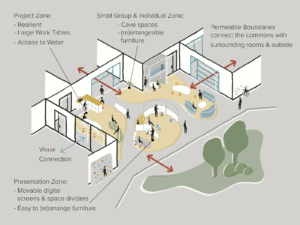Top 5 Things to Look for in Common Core Materials

By: Adam Berkin
The shift in the typical classroom setup has been underway for a while now. A focus on personalized learning in classrooms whose students have a broad range of skill levels and learning styles has meant teachers have had to become adept with new setups (flipped, 1:1 computing, etc.), methods (small group, whole group, etc.), and tools (handheld devices, online assessments, etc.) to help them differentiate instruction.
With the advent of the Common Core, this all just got a bit more complicated. More students are automatically “below level” because of grade level shifts in standards, and teachers must learn a whole new set of standards. Which tools and resources are up to the challenge of this brave new world teachers face?
In the spirit of Teacher Appreciation Week and in honor of all the teachers who play an integral role in the decision-making process for curriculum materials, here are some things to look for in new Common Core materials:
- Brand-new, not-repurposed content: When reviewing the content, ask: “Is the content true to the details and intent of the Common Core? Was it built from scratch?” Although not foolproof, you can check the copyright date of the material. Is it 2011 or later? If not, someone is trying to pass off old, realigned, pre-Common Core content as new, and this just won’t get the job done.
- Gradual-release instructional model for students: The new standards are much more rigorous. Do the student materials support mastery with a gradual-release instructional model that sets students up for success? If not, developing students’ ability to internalize concepts and answer questions independently will be a much harder task.
- Thoughtful, embedded professional development at point of instruction: What do the teacher resources look like? Look for more than just an answer key—you want step-by-step guidance for teachers that makes it easy to implement the new standards. Are the new Common Core standards and learning progressions explained in detail? Teachers should not be expected to have to figure this out all on their own.
- Prerequisite skills lessons to help teachers reteach skills: Standards have shifted; so you may find yourself in a situation where all students (not just those performing below level) have not fully mastered a concept from an earlier grade. Does the program give you easy access to lessons that help you teach (or reteach) those prerequisite skills? If not, you may end up spending a lot of time piecing these materials together and still be left with disjointed materials that don’t offer a cohesive instructional approach.
- Connection to an optional valid and reliable online assessment: Does the program link to an online adaptive assessment? The ability for teachers to pinpoint the needs of each student and differentiate instruction will be made that much easier if the answer to this question is “yes.” And even better if there is related online instruction that comes with it— this will help increase student engagement.
While teachers’ everyday lives in the classroom are far from simple, hopefully this list can help make the decision-making process more so.
Adam Berkin is Vice President of Product Development at Curriculum Associates, LLC






0 Comments
Leave a Comment
Your email address will not be published. All fields are required.